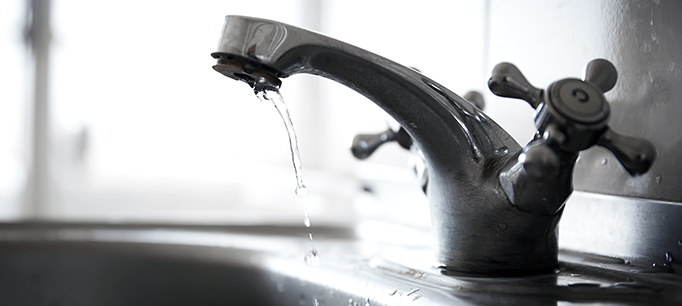The water supply problems of disadvantaged rural communities can reflect not only a lack of resources, but also weak connections to the broader professional water community. The Mojave Water Agency in California’s southern desert has an innovative program to help small systems under its jurisdiction make improvements. We talked to Lance Eckhart, the agency’s director of basin management and resource planning, about this program.
PPIC: Describe the program.
Lance Eckhart: It started a few years ago when we to updated the agency’s regional water management plan, which included getting public input. Our agency covers 5,000 square miles—so we took our planning process on the road and visited many disadvantaged communities that previously had been underrepresented.
We have 40 small water districts scattered across the region, which are a backbone of these rural desert communities. We learned that they needed a lot of help. They hadn’t been keeping up with system upkeep. The rules had changed over time, and they weren’t always aware of best management practices. Maybe they hadn’t raised water rates in 20 years. They didn’t have the capacity to make many upgrades that the county wanted.
We’re a water wholesaler—we have no experience running very small community water systems, and we needed help. We engaged a local nonprofit, the California Rural Water Association, to join us. They help build technical, managerial, and financial capacity. We initially asked our board for $200,000 in “seed money” for the program. Half of that was to “get stuff done”—basic engineering, legal analysis, audits, system checks—anything that can be stapled to a grant application to help raise funds for capital improvements. One condition to get our help is that agencies have to upgrade their technical, managerial, and financial practices. It’s more of a leg up than a handout.
Another really important element was to develop training systems so these agencies can manage themselves. We hold free quarterly operator trainings on skills tailored to the region’s needs. This allows people who were fairly isolated to talk to each other in one place, and gives us a venue to share information about the program.
PPIC: What are some problems that rural water suppliers in your basin need help with?
LE: There’s a general lack of maintenance. Many have inadequate flow to fight fires. Too many have no redundancy if the local reservoir fails. Some are dealing with natural contaminants. Many systems have no financial reserves, so if a pump breaks they have to pass the hat. Many don’t have emergency plans if the well goes down or a fire or power outage cuts off water. A lot of these systems don’t have meters, so they don’t know if they have leaks or when to conserve.
With our help, water suppliers are now talking to each other and looking for ways to back up neighboring systems—for example, with interties. We are starting to bundle many systems in to one grant for the region. For example we grouped 26 disadvantaged systems together for a leak detection grant program, which will be the foundation for future capital improvement grants—something likely not possible if individually pursued. Also, some systems are realizing their best path forward is to consider consolidation with bigger agencies, which is a big change.
PPIC: What are your hopes for the future with this program?
LE: We’re excited that this model is now being adopted for a much bigger area. The granting agencies and state Department of Water Resources are beginning to encourage local nonprofits to partner with water agencies. I’d like to see this kind of partnership expand even more. While each underserved water system is unique, there are repeating problems. We know we can create a formula that can be used over and over again. We’ve shown how to bundle different small systems into a single grant. Being efficient in addressing this problem is good for the state, and good for the locals.
I also hope that the disadvantaged communities continue to realize they are not alone. I hope they continue to have a collective voice and stay cohesive—because that’s the best way to keep this issue alive and on the radar of the state and bigger agencies.
Read ”New Laws Strengthen State’s Water Safety Net” (PPIC Blog)
Read “The High Cost of Drought for Low-Income Californians” (PPIC Blog)


